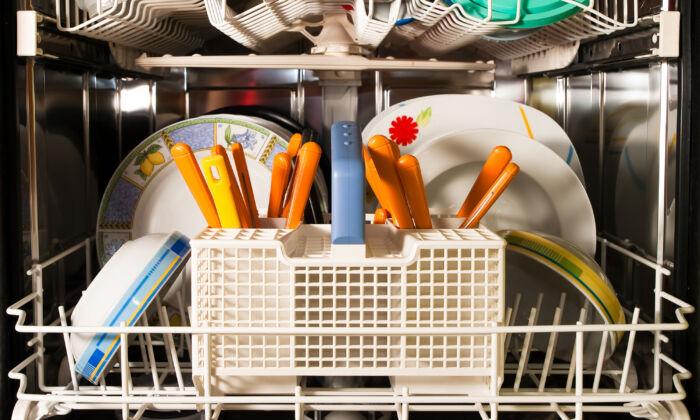Trying to ascertain what went wrong with the wash can be perplexing, but it doesn’t have to be. Here is how to load a dishwasher the right way to ensure that every dish comes out squeaky clean.
Load All Dishes in Order
According to Better Homes & Gardens, it is important to load your dishes in an orderly fashion if you want the best results from your dishwasher. For starters, dishes should never face the exterior walls of the dishwasher. Here’s a breakdown of where to place everything inside.
1. Glasses and plastics should be loaded first. These items belong on the on the upper rack, and cups should be placed facing downward to ensure proper cleaning.
2. Utensils should be loaded next. Spatulas, serving spoons and other large utensils should go on the side of the upper rack. Silverware, however, should go in the utensil basket that is often found on the side of the bottom rack. Knives should be placed with their handles upwards for safety, and forks and spoons should be mixed together in each compartment to ensure an even cleaning on each item.
3. Lastly, place all pots, pans, plates, bowls and other large items on the bottom rack. Bowls should be placed face down to ensure the best cleaning.
Extra Tips
According to Whirlpool, it is important to ensure that the dishwasher’s sprayer arms are not blocked by any dishes. Each dishwasher brand may place their sprayer arm (of which there may be more than one) in a different place, so make sure to locate your dishwasher’s sprayer arm before loading any dishes.
Secondly, dirty dishes should be placed in between the tines, not over them. Placing dishes over the tines could lead to items falling over or knocking into each other during a wash cycle.
Lastly, avoid overcrowding. Ensuring a separation between items inside the dishwasher will ensure that every dish is cleaned effectively during the wash cycle and that no sprayer arms are clogged in the process.
Copyright 2023 The Atlanta Journal-Constitution. Visit at ajc.com. Distributed by Tribune Content Agency, LLC.






